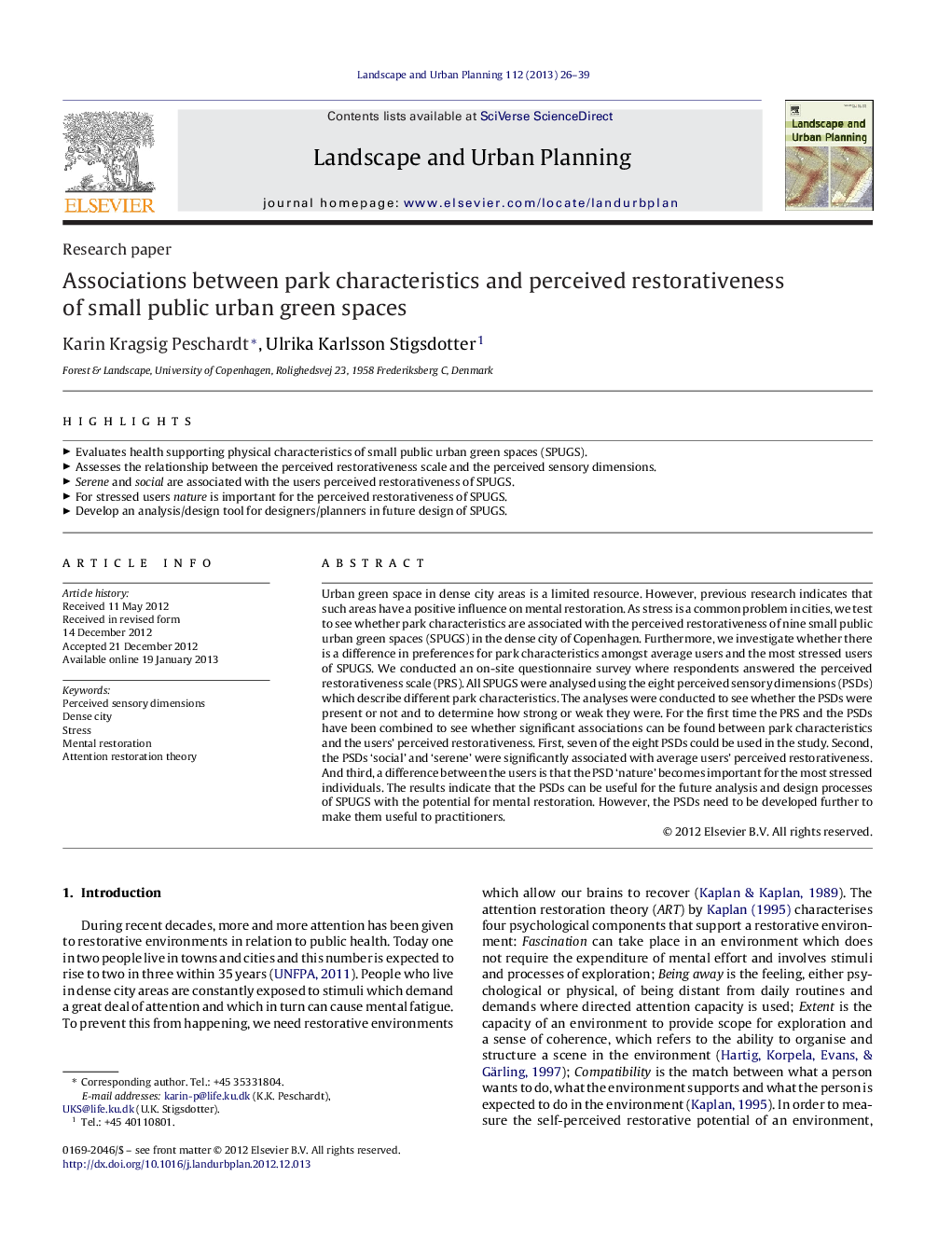| Article ID | Journal | Published Year | Pages | File Type |
|---|---|---|---|---|
| 1049330 | Landscape and Urban Planning | 2013 | 14 Pages |
Urban green space in dense city areas is a limited resource. However, previous research indicates that such areas have a positive influence on mental restoration. As stress is a common problem in cities, we test to see whether park characteristics are associated with the perceived restorativeness of nine small public urban green spaces (SPUGS) in the dense city of Copenhagen. Furthermore, we investigate whether there is a difference in preferences for park characteristics amongst average users and the most stressed users of SPUGS. We conducted an on-site questionnaire survey where respondents answered the perceived restorativeness scale (PRS). All SPUGS were analysed using the eight perceived sensory dimensions (PSDs) which describe different park characteristics. The analyses were conducted to see whether the PSDs were present or not and to determine how strong or weak they were. For the first time the PRS and the PSDs have been combined to see whether significant associations can be found between park characteristics and the users’ perceived restorativeness. First, seven of the eight PSDs could be used in the study. Second, the PSDs ‘social’ and ‘serene’ were significantly associated with average users’ perceived restorativeness. And third, a difference between the users is that the PSD ‘nature’ becomes important for the most stressed individuals. The results indicate that the PSDs can be useful for the future analysis and design processes of SPUGS with the potential for mental restoration. However, the PSDs need to be developed further to make them useful to practitioners.
► Evaluates health supporting physical characteristics of small public urban green spaces (SPUGS). ► Assesses the relationship between the perceived restorativeness scale and the perceived sensory dimensions. ► Serene and social are associated with the users perceived restorativeness of SPUGS. ► For stressed users nature is important for the perceived restorativeness of SPUGS. ► Develop an analysis/design tool for designers/planners in future design of SPUGS.
